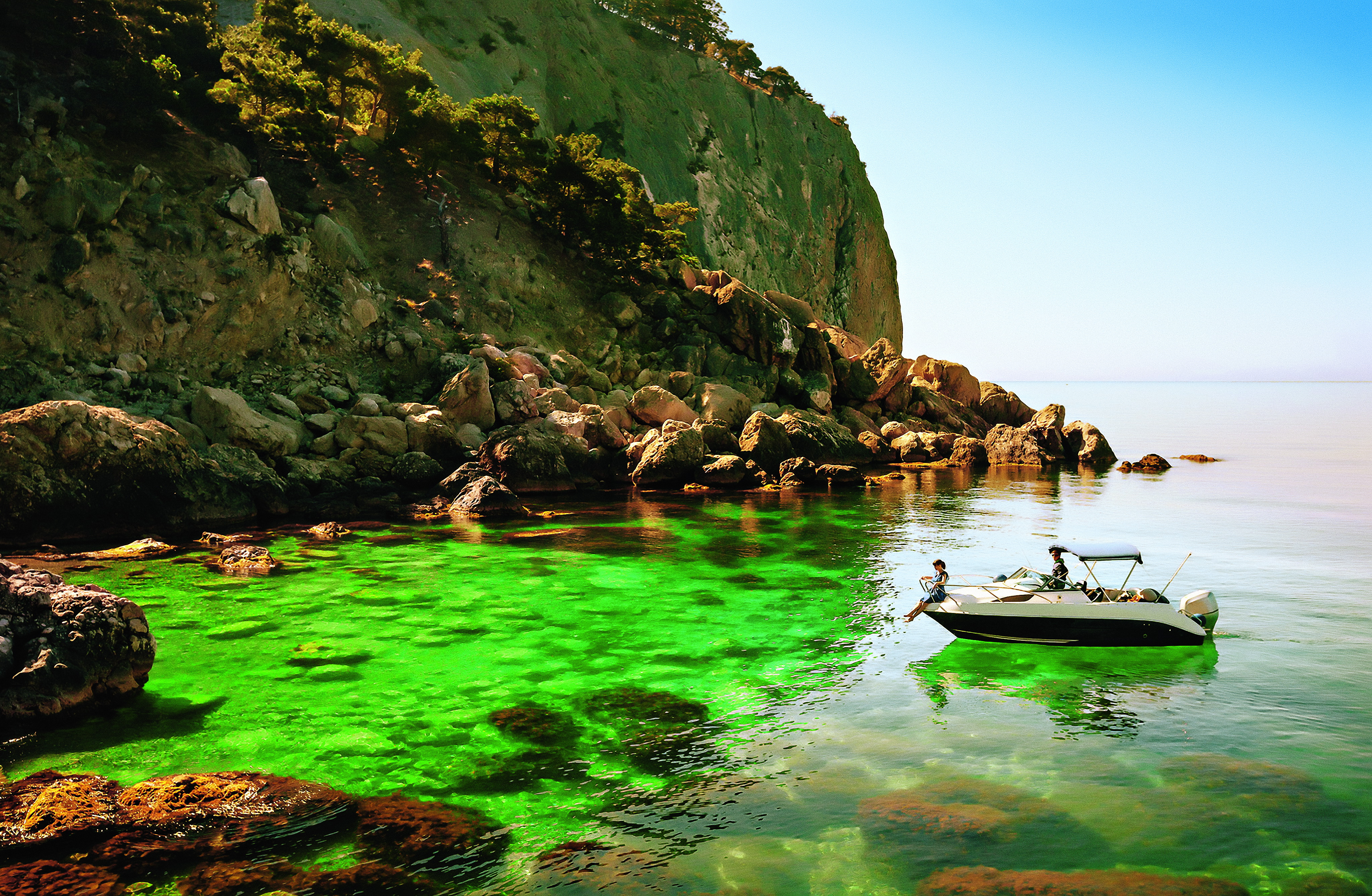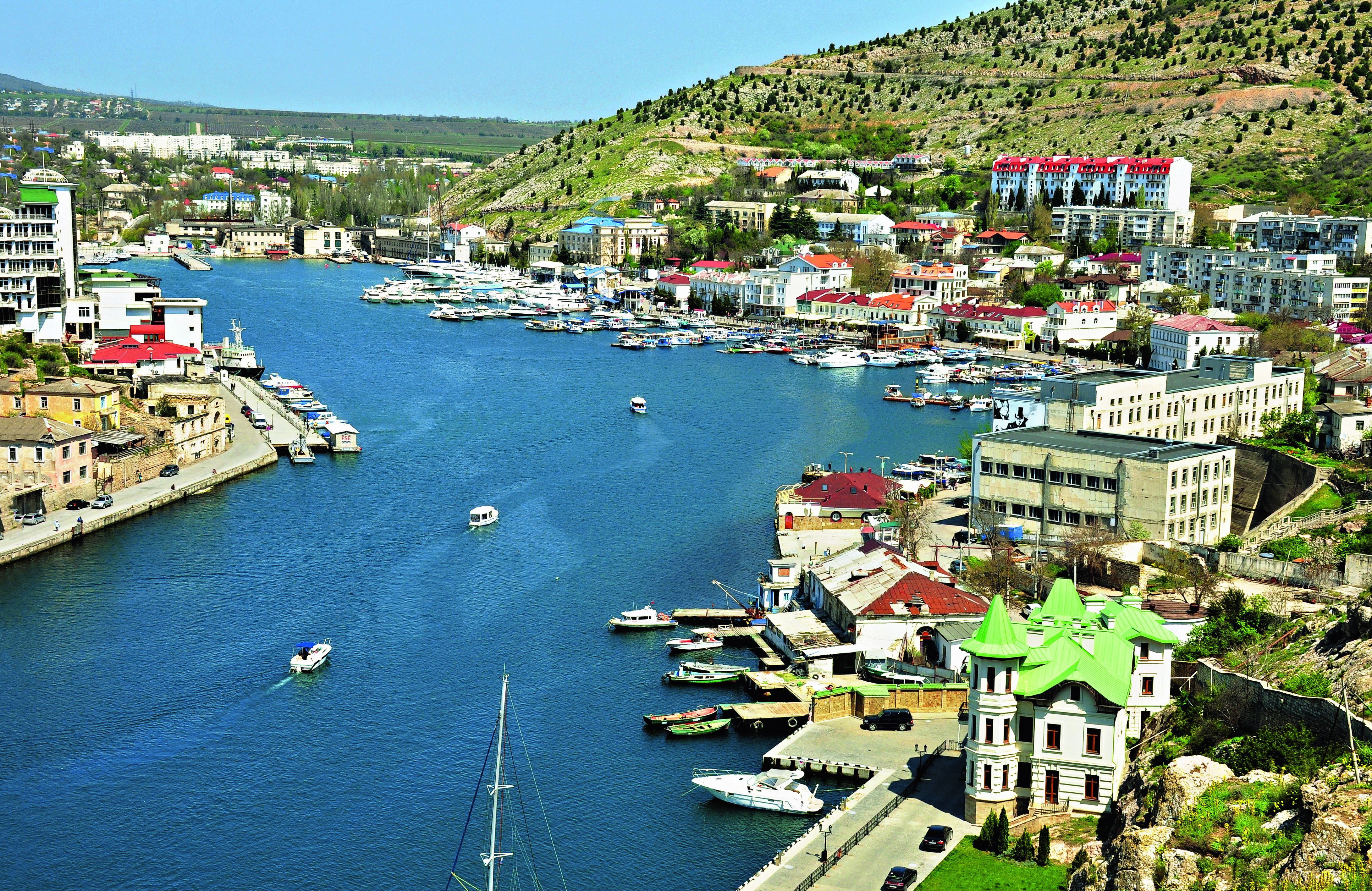Grafskaya Pier, Sevastopol. The pier is a historical and architectural landmark named after the Serbian Count Marko Voynovich, who was a founder and admiral of the Black Sea Fleet.
Located on the Black Sea in the south-west of Crimea, the city of Sevastopol is a cultural, historical, scientific and recreational centre, and the home port of Russia’s Black Sea fleet. Its rich history and amazing natural surroundings make Sevastopol an attractive destination for travellers.
TEXT: MARIA KUDRYAVTSEVA, VALERY IVANOV
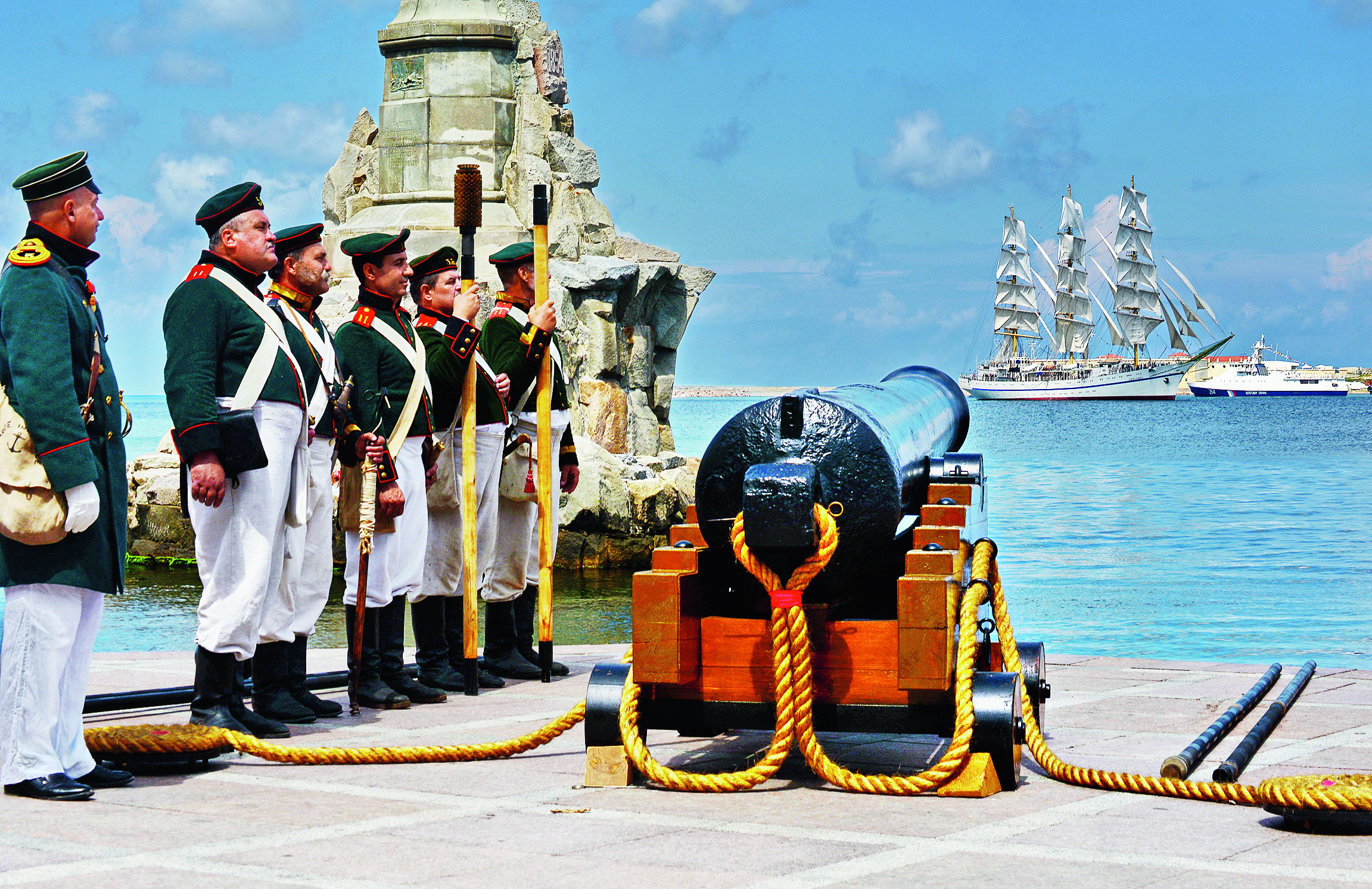
The festival show on the embankment to celebrate Navy Day.
Sevastopol’s history dates back several thousand years, and visiting the city allows you to travel back through the centuries to explore different epochs and become acquainted with the intertwining of its cultures, civilizations and ethnic groups. Sevastopol’s unique strategic and geographic location has helped to determine its fate and identity, playing a significant role in the formation of the city.
Worthy of Honour
Founded in 1783 on the order of Empress Catherine II, the name “Sevastopol” can be translated from Greek as “honourable”. Catherine turned the city into Russia’s principle naval base, and for 236 years Sevastopol has lived up to its proud name for its unparalleled courage and military glory.
Many important events, well-known legends and traditions are linked to the city. It is famous for major tourist attractions such as the Tauric Chersonesus Historical and Archaeological Museum-Reserve, the Museum of Military History of Fortifications, the Sevastopol Military-Historical Museum-Reserve and Great Sevastopol Trail, as well as its beaches, theatres and sea cruises.
Included on the UNESCO World Heritage List in 2013, the Tauric Chersonesos Historical and Archaeological Museum-Reserve dates back 2,000 years and is one of the most popular tourist attractions.
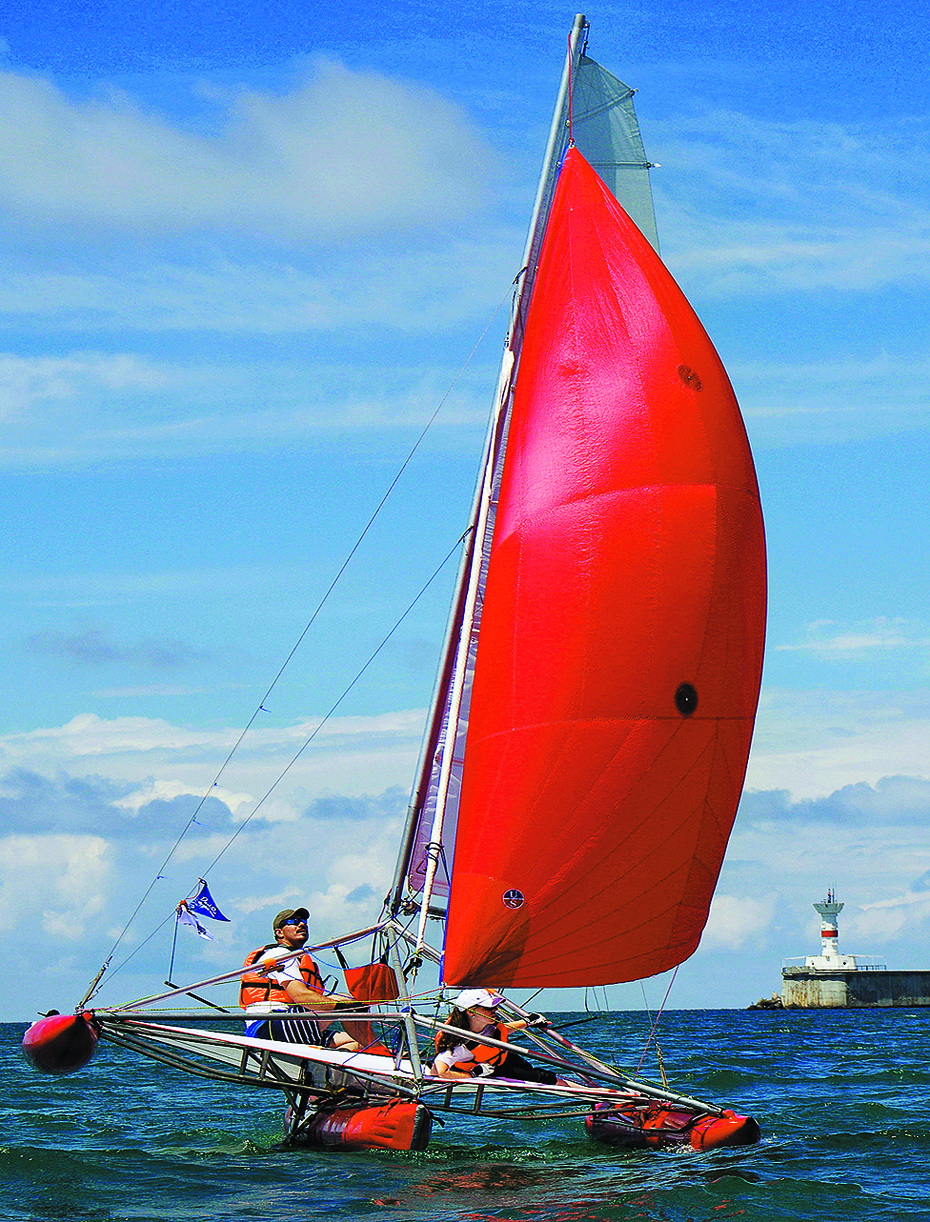
Included on the UNESCO World Heritage List in 2013, the Tauric Chersonesos Historical and Archaeological Museum-Reserve dates back 2,000 years and is one of the most popular tourist attractions, where the historic chronicles of the region emphasize the period of early Orthodox Christianity. It was here that St. Vladimir, or Prince Vladimir the Great, was baptized (at Chersonesos, also known as Korsun), thus beginning the process of Christianization of Old Rus’.
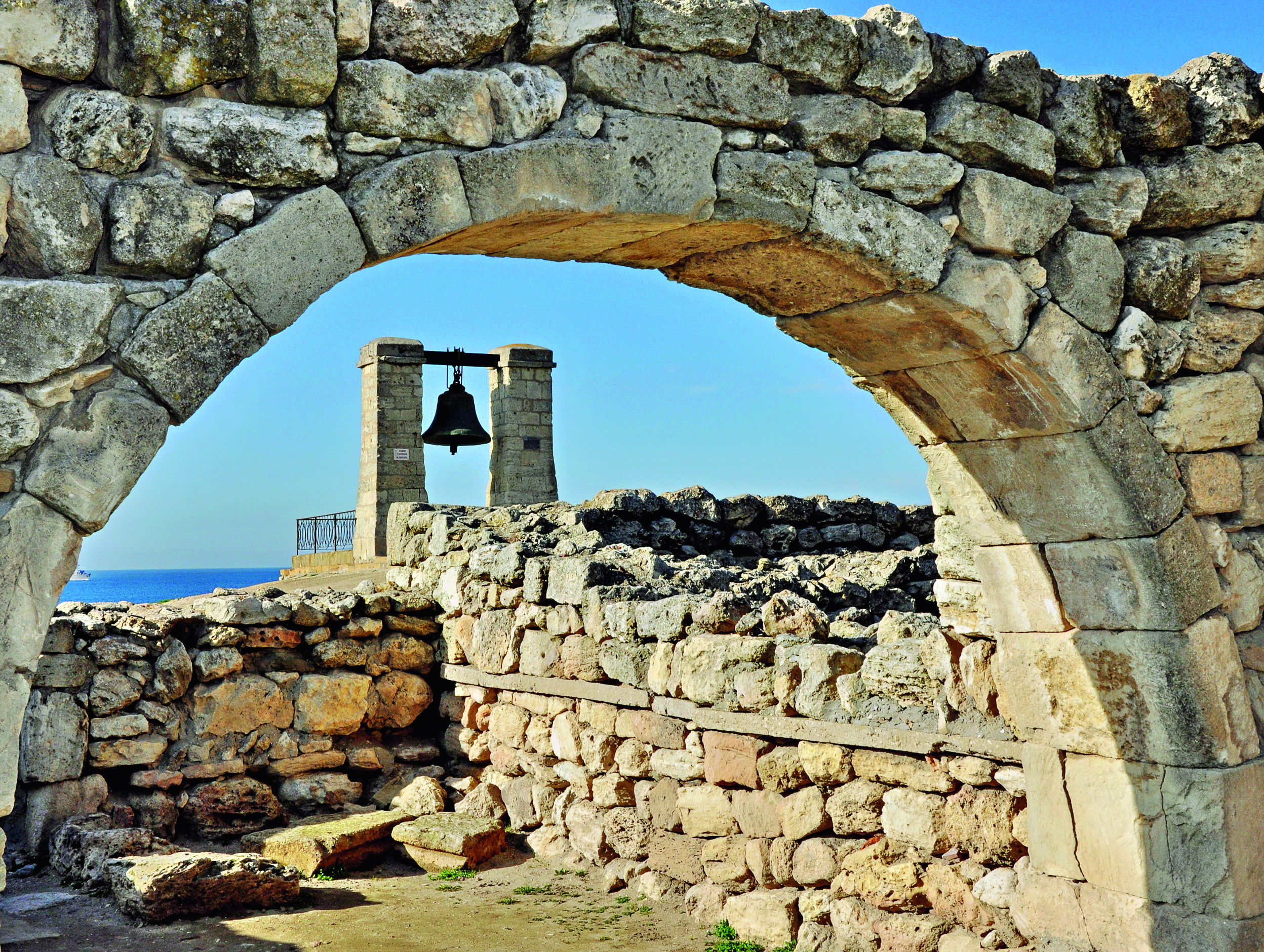
The Sevastopol Military-Historical Museum-Reserve combines the story of the exploits of Russian soldiers during the Crimean war of 1853-1856 and World War II, and consists of the Memorial Complex of the Monuments of the Defence of the City 1854-1855, the “Historical Boulevard”, the Defence of Sevastopol 1854-1855 Panorama, the Memorial Monuments of the Defence of the City 1854-1855, “Malakhov Kurgan” 1941-1944, the Memorial complex “Sapun-Gora”, the “Sturm Sapun Mountain May 7, 1944” Diorama, the Cathedral of St. Vladimir, where many outstanding military figures are buried, the Museum Cultural-Exhibition Centre, and the House-Museum of the Sevastopol Underground Resistance 1942-1944.
The Museum of Military History of Fortifications and Museum “Coastal Battery 35” are of particular interest for tourists. The Museum of Military History of Fortifications is an underground, rock-hewn submarine repair and maintenance base, which was once a top-secret installation and is now one of the city’s top tourist attractions. The Museum “Coastal Battery 35” is a museum complex dedicated to the heroic feats of the city’s defenders in 1941-1942, the site of bloody battles where soldiers died fighting the Nazi invaders.
Their courage won them unfading worldwide fame. “Gentlemen! If only I could walk, I would go to the holy places of Russia — Leningrad, Stalingrad, and Sevastopol, get down on my knees and kiss the holy land,” said American President Franklin D. Roosevelt.
After the Crimean War, settlements named after Sevastopol (sometimes called Sebastopol) appeared in Australia, the United Kingdom, California and Mississippi, and even on the island of Mauritius in the Indian Ocean. The museum Sebastopol House was built in Texas in 1854-1856 and is included in the National Register of Historic Places, while Boulevard de Sébastopol is one of Paris’s main thoroughfares.
A Wealth of Culture and Nature
The city boasts many interesting places to visit, including museums, churches, and memorials: there are some 2,175 sites in all, of which 1,358 have the status of cultural heritage sites, with 126 under federal protection. There are British, French, German, Italian, and Turkish monuments and memorials, which have been visited by public figures such as Winston Churchill, Franklin Roosevelt, Prince Charles, Silvio Berlusconi and other high-ranking officials at different times.
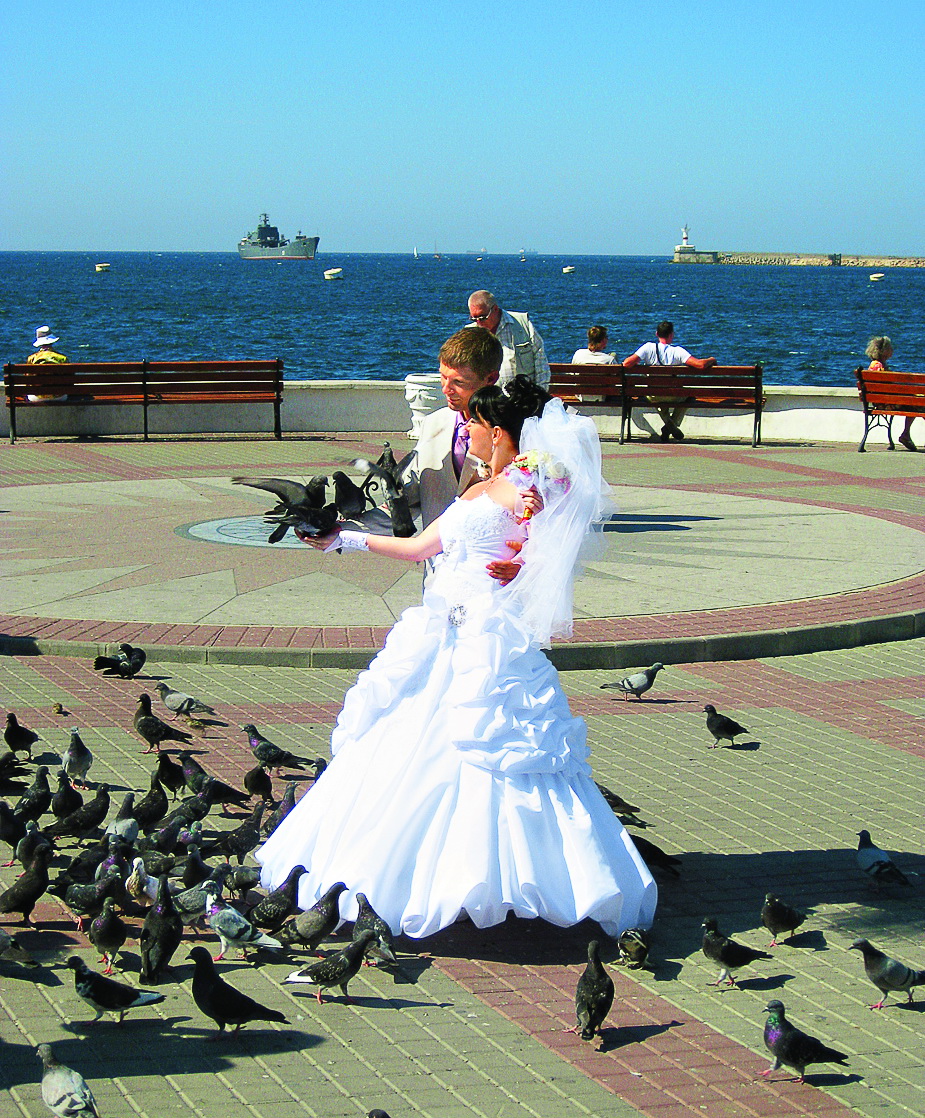
With its mild coastal climate, Sevastopol’s tourist season lasts 130 sunny days. The sea heats up to about 23-24 °С in July, and the amazing mountain views and extraordinary seascapes attract Russian and foreign travellers for holidays and vacations. The city has more than 185 hotels and guesthouses, numerous cafes and restaurants, and 36 city beaches, and its citizens are polite and hospitable to all, doing their best for guests.
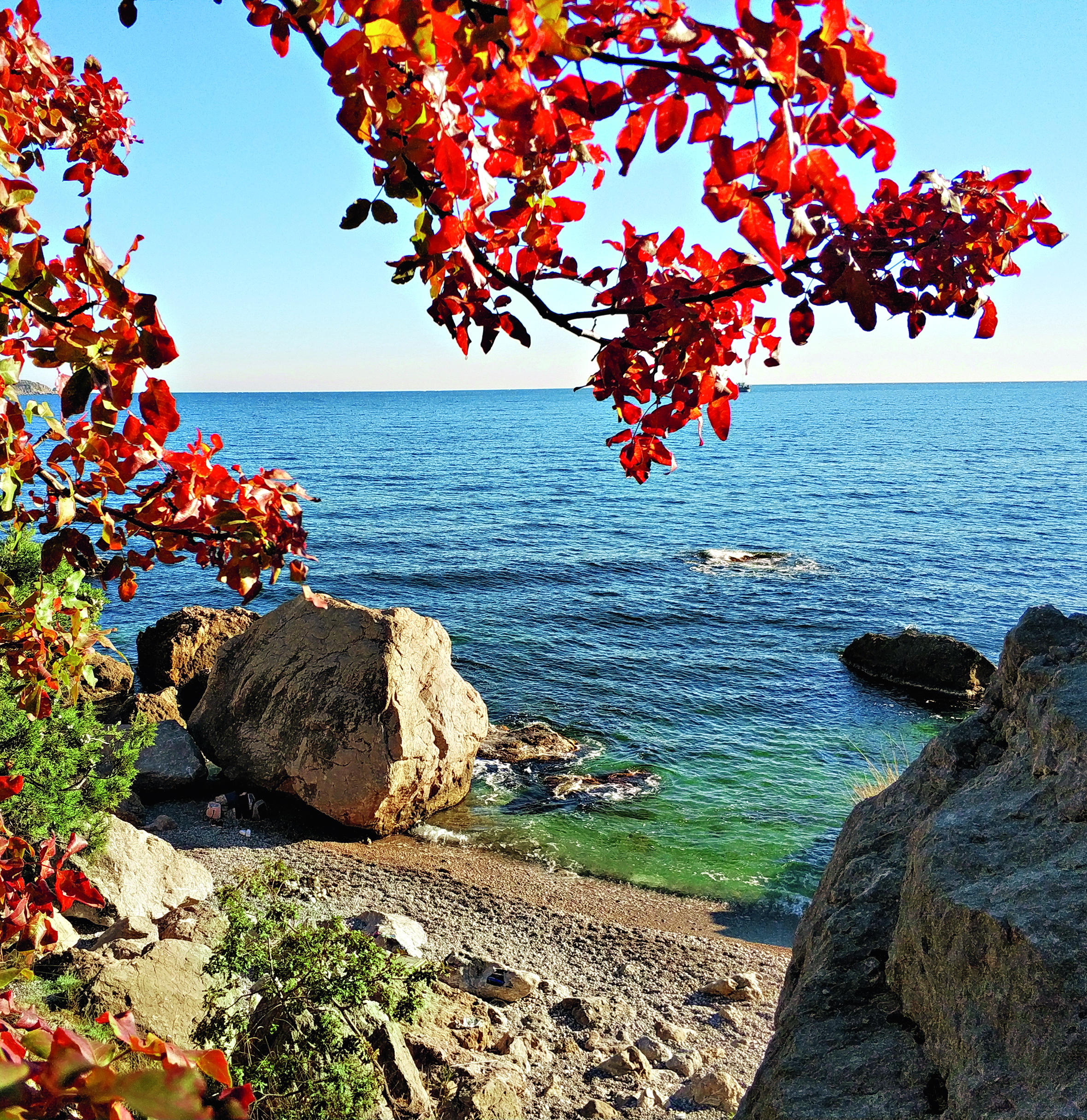
The Great Sevastopol Trail
The Great Sevastopol Trail (GST) is a safe and easily accessible trail for adventure travellers, its 117-kilometer path circling the peninsula from Balaklava to Lyubimovka, from the southern to the western shores of the Black Sea through the Crimean Mountains. The main route consists of eight main sites, with the paths between them from four to ten hours each to walk.
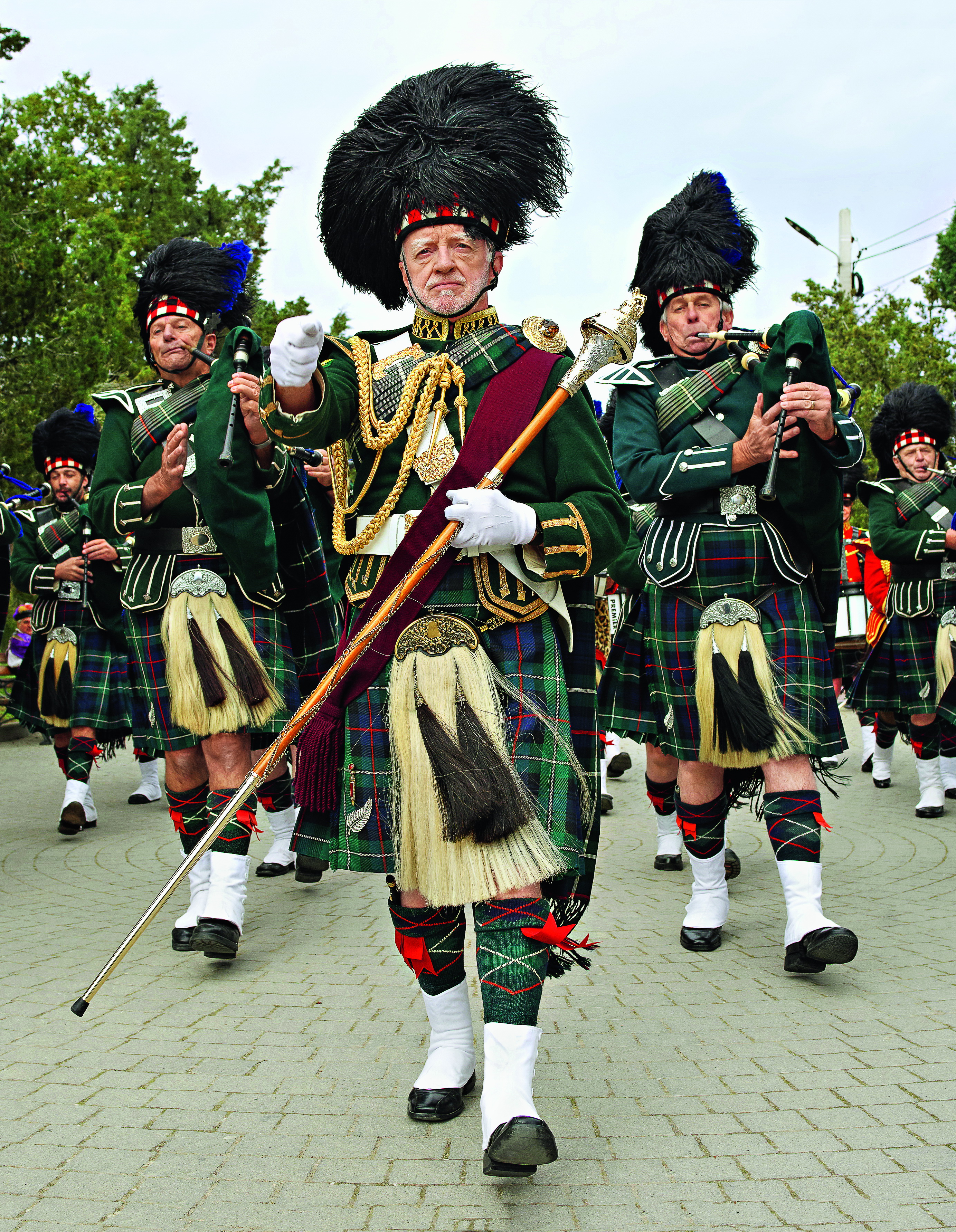
Bagpipes and drums from New Zealand play in the antique theatre in Chersonesus.
The Great Sevastopol Trail is a trail for adventure travellers, its 117-kilometer path circling the peninsula from Balaklava to Lyubimovka, from the southern to the western shores of the Black Sea through the Crimean Mountains.
GST is equipped with a tourist navigation system and a Via ferrata (translated from Italian, it means “iron path”). This is a protected climbing route fitted with steel cable and bracket supports that passes through some of the most beautiful landmarks of Southern Crimea. The Via ferrata requires no specialist climbing skills, and travellers are provided with maps and equipment, together with free use of a special website and mobile app.
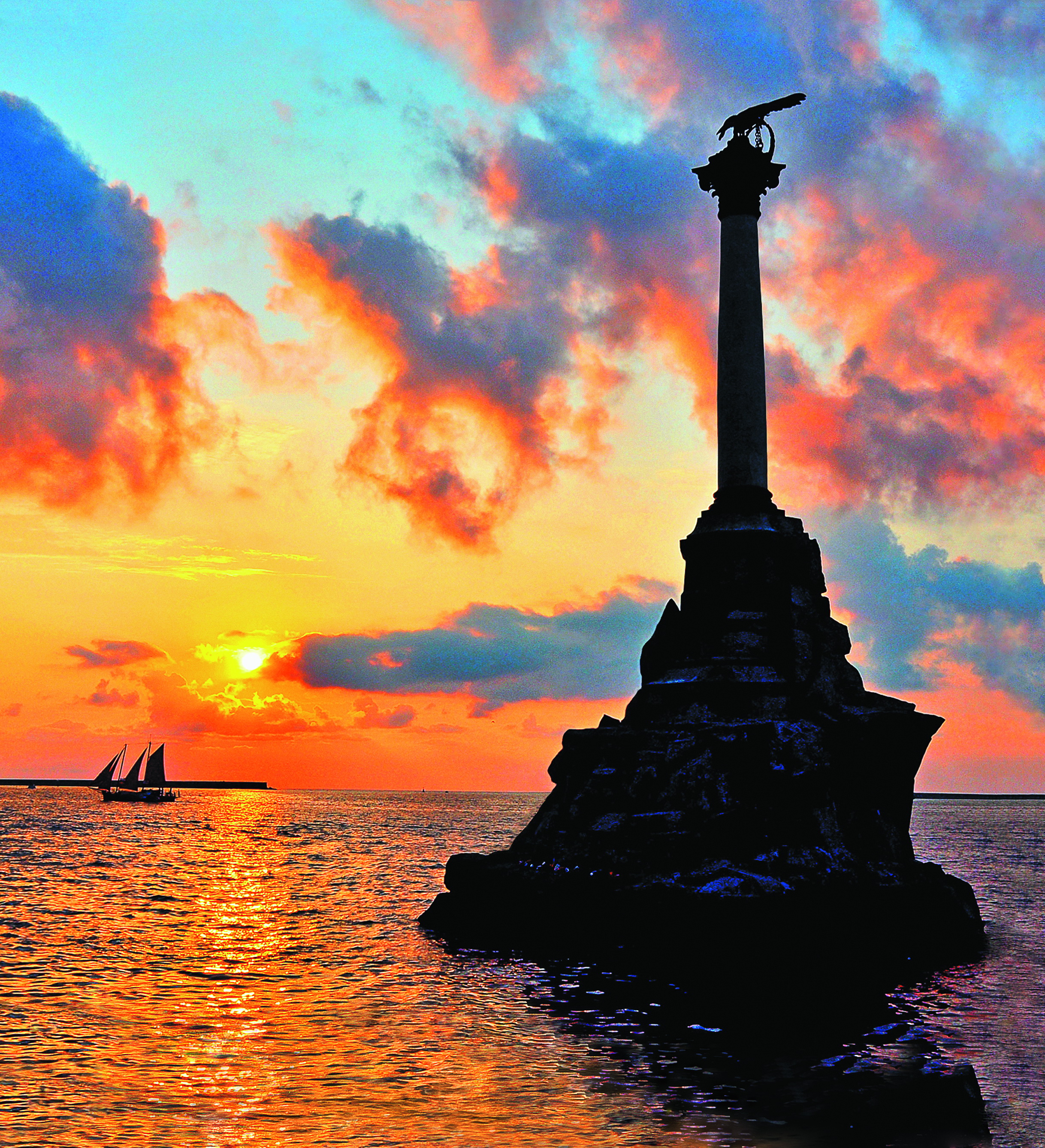
The Monument to Sunken Ships is the best known symbol of the city. It was erected in 1905 to commemorate the 50th anniversary of the First Siege of Sevastopol when Russian ships were sunk to prevent the enemy from entering the harbour.
Sea Kayaking
Sevastopol is a sea port, and offers a wide range of water activities including diving, yachting and kayaking, allowing its world of underwater harbours, ship wrecks and underwater caves to be explored. You can hire a yacht to sail along the South Crimean shore, while with a kayak you can explore the area’s hidden beaches and rock tunnels, and relax far away from civilization.
In Vino Veritas
Enogastronomy is a new travel philosophy that seeks out undiscovered tastes and authentic traditions, which in Sevastopol means fresh seafood and local wines, many made by small producers. On the same latitude as Burgundy, Bordeaux and Piedmont, the area’s vineyards stretch out over the Sevastopol area down picturesque roads and over extraordinary landscapes.

With their fine aroma, Sevastopol’s wines are unique and the city boasts five large wineries, which offer tours, during which you can discover their wine-making secrets, and wine tastings.
With their fine aroma, Sevastopol’s wines are unique and the city boasts five large wineries, which offer educational tours, during which you can discover their wine-making secrets, and wine tastings. Join the festivities!
Sevastopol hosts many special events, including international festivals and sports competitions. These include Navy Day, celebrated on the last Sunday of July, one of the city’s favourite occasions. Other large-scale events include the Opera in Chersonesus Festival (August 14-17, 2019), the Crimea Historical Military Festival (September 6-16), Bike Show (August 10), Sevastopol Sail Week (September 15-22), the international extreme sports festival X-FEST (August 24-25), the Great Sevastopol Trail Festival (October 14-20), and the Big Tourist Jamboree in the well-equipped Toporova Dacha.
TLR
Photos: TASS Photo Agency / Vasily Batanov / Visualrian / Yuri Kondratyev / Yuri Yuganson
Sevastopol Tourism Development Center
Sevastopol Tourism Development Centre has been established to promote the city’s tourism potential and best travel experiences.
For more information and feedback related to our tourist landmarks, routes, tours, festivals, exhibitions and concerts.
Contact us on +7 (978) 907-96-70,
e-mail: [email protected]
Sites: sevastravel.ru, facebook.com/pg/SevastopolTIC/posts, vk.com/sev_tic
Travel information centres are located at
• Sevastopol, Kornilova Embankment 2,
Tourist Information Office• Sevastopol, Balaklava, Nazukina St. 29,
Tourist Information Office• Sevastopol, Lyubimovka, Kachinskoye Highway (Sofia Perovskaya stop), Tourist Information Office Perovskaya stop),
Tourist Information Office
